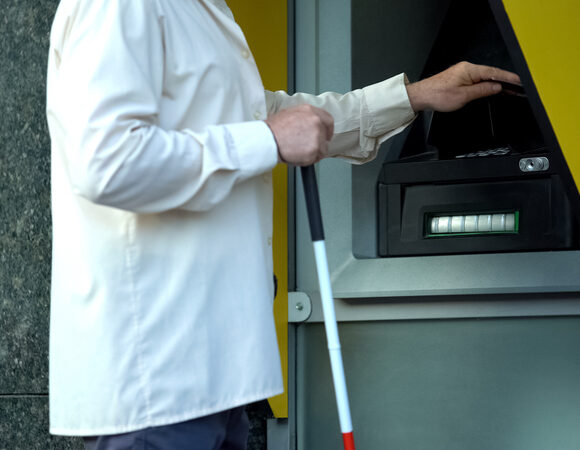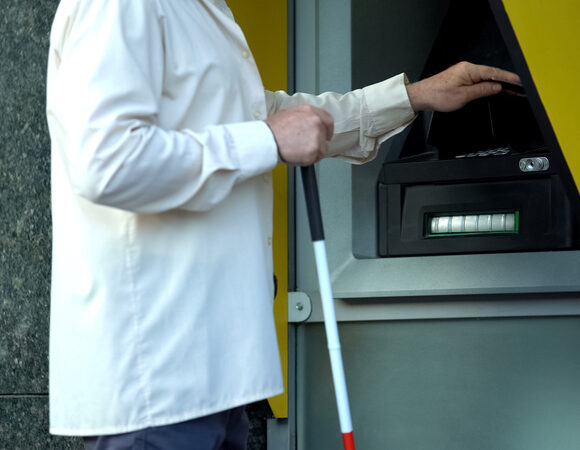Online Accessibility Act
On October 2, 2020, Congressmen Lou Correa (D-CA) and Ted Budd (R-NC) introduced a bill called the Online Accessibility Act. This legislation provides direction on website accessibility. It proposes the development of regulations, along with a new procedure for handling complaints about non-compliance. It aims to reduce the number of accessibility lawsuits that have been rising annually. While fewer lawsuits and clear regulations sound appealing, this legislation is not all good news for people with disabilities.
How is the Online Accessibility Act different from current legislation?
The ADA currently prohibits discrimination on the basis of disability. It includes all areas of public accommodation. Courts have ruled that this includes “digital” places such as websites which are one of the largest parts of online accessibility. There are currently various commissions and the Departments of Justice, and Health and Human Services that enforce these laws. Despite repeated requests by Congress, advocacy organizations, and the public, no specific regulations exist that outline what digital accessibility should look like. And because there are no set guidelines, lawsuits have increased year after year.
Organizations say they can’t become ADA compliant because they don’t know exactly what constitutes compliance. This is particularly noticeable in states with additional state accessibility legislation, such as California, New York, and Florida. In most of these cases, the courts refer to the international standard called Web Content Accessibility Guidelines (WCAG), developed by the World Wide Web Consortium, as the standard of choice for meeting the ADA.
What are the proposed changes for online accessibility?
Specific Language for Websites and Mobile Apps
The Online Accessibility Act includes specific language about websites and mobile applications. This language removes any ambiguity about whether or not the ADA includes digital content. Because the internet wasn’t widely used when the ADA was signed into law, questions continue about this, despite many courts ruling that these are included by the ADA. The Department of Justice has mentioned that ADA wording was left intentionally vague so businesses could make their websites accessible in their own unique ways without having to adhere to a static checklist.
 Adding this language is helpful, however, it does not take into account many forms of technology that currently exist. It does not include tools such as kiosks, artificial intelligence, virtual reality. It also doesn’t take into account technology that has yet to be developed. When the ADA was originally signed into law, no one imagined how prominent the internet would become in the daily lives of nearly every person. Because the internet wasn’t mentioned in the legislation, no regulations were developed around online accessibility. This caused untold numbers of lawsuits and confusion for organizations. Using overly specific language in this new legislation will create the same problem going forward.
Adding this language is helpful, however, it does not take into account many forms of technology that currently exist. It does not include tools such as kiosks, artificial intelligence, virtual reality. It also doesn’t take into account technology that has yet to be developed. When the ADA was originally signed into law, no one imagined how prominent the internet would become in the daily lives of nearly every person. Because the internet wasn’t mentioned in the legislation, no regulations were developed around online accessibility. This caused untold numbers of lawsuits and confusion for organizations. Using overly specific language in this new legislation will create the same problem going forward.
Establishment of digital accessibility standards
The new legislation also calls for the establishment of digital accessibility standards, which the current law lacks. The lack of clear rules for digital accessibility has made it very difficult for businesses to ensure they are compliant. With no specific guidelines in the ADA, many companies are left wondering what standard they should be following to be compliant.
Many states do have digital accessibility guidelines. Additionally, many courts have stated that Web Content Accessibility Guidelines (WCAG) developed by the World Wide Web Consortium (W3C) are the appropriate standards to follow. A specific federal standard will make it easier for companies to understand what is expected to be accessible.
However, the standard referred to in the new Online Accessibility Act is WCAG 2.0 Level A and AA. This is an outdated version of WCAG. WCAG 2.1 published two years ago. The legislation does specify that compliance should follow any subsequent versions. However, the version specified should at least be updated to be what is now current.
A two-year process of developing regulations and procedures
 The proposed legislation states that the Access Board and the Justice Department must develop regulations for handling digital accessibility complaints. The bill also gives them more than two years to do this. The Justice Department already has procedures in place for investigating claims of inaccessibility. Requiring new procedures could effectively put a two-year delay in the ability of people with disabilities to get a resolution to barriers. A wait of two years (or likely, more) to be able to use your bank’s mobile application is not acceptable.
The proposed legislation states that the Access Board and the Justice Department must develop regulations for handling digital accessibility complaints. The bill also gives them more than two years to do this. The Justice Department already has procedures in place for investigating claims of inaccessibility. Requiring new procedures could effectively put a two-year delay in the ability of people with disabilities to get a resolution to barriers. A wait of two years (or likely, more) to be able to use your bank’s mobile application is not acceptable.
Change of procedure for remedies to accessibility barriers
The proposed change in how remedies for accessibility barriers are sought is the most objectionable thing in the new legislation. It states that no lawsuit can be filed unless the complainant has first notified the organization of an accessibility problem, waited 90 days, then filed a complaint with the Justice Department, which then has six months to determine whether or not there has been a violation. It is then up to the Justice Department to file suit against the offending organization. The Justice Department must conduct periodic reviews of accessibility for organizations, but how this can be accomplished efficiently and with any regularity is unclear. This adds more delay to removing accessibility barriers for people with disabilities.
Removal of the best remedy
The bill states that no lawsuit may be filed to resolve accessibility barriers until all administrative remedies have been exhausted. Lawsuits are historically the most effective tool for accomplishing a resolution for people with disabilities whose complaints have not been addressed. The most common chain of events for people with disabilities who face barriers is this: They experience a barrier and contact the organization at fault to point out the barrier. They may get a response and even a fix, but most often they are told the problem is in a “queue” to be fixed, or they get no response at all.
Due to a lack of federal regulations, many organizations are unsure how to resolve the issue. This quite often results in nothing being done to fix the barrier, and the person who complained still has no way to access the goods or services they were trying to use when they encountered it. So nothing happens until finally, in frustration, the person facing the barrier files a lawsuit. Too often, this is the only way to force organizations to confront these problems. The thousands of accessibility lawsuits filed tell the story of how difficult it is to persuade organizations to address these barriers. The removal of this remedy is discriminatory.
Achieving online accessibility without removing remedies
Delayed enforcement by agencies and removal of last resort remedies is not the best way to eliminate accessibility lawsuits. Federal regulations should be established for online accessibility. These regulations must include language for current and future technologies. Clear regulation and inclusion of new developments in technology will contribute to a reduction in lawsuits. This is because organizations will know what is required for online accessibility. Additionally, months of delay mean months of continued barriers for people with disabilities trying to access information and services. The Justice Department and other agencies must enforce these regulations in a timely manner. To ensure that people with disabilities have a last resort when the barriers they encounter are not resolved, the final remedy of lawsuits must remain in place.
If you are ready to remove barriers on to people with disabilities for your online content, contact us.
The post Online Accessibility Act – Yea or Nay? appeared first on Equidox.




